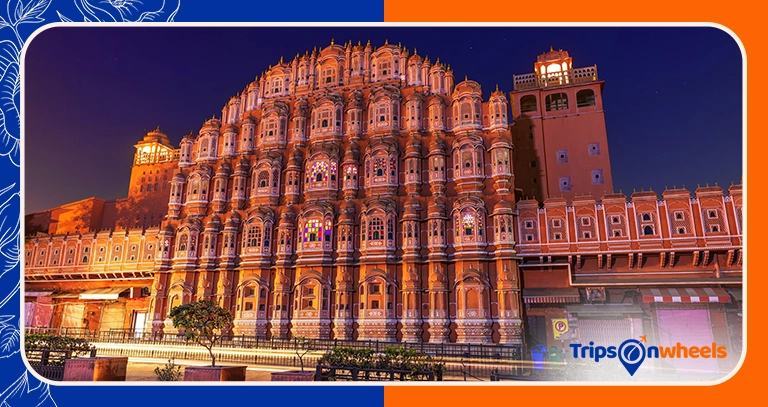Rajasthan, an epitome of royalty and heritage in India, offers a mesmerizing blend of culture, history, and tradition, making it one of the most fascinating states in India. Here’s a deeper look into this colorful state through 50 engaging facts:
Historical Significance and Architectural Marvels
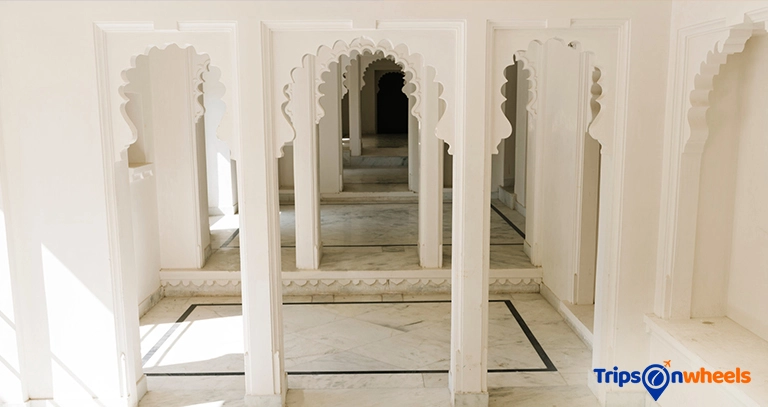
Geographical Diversity of Rajasthan
Diversity of Rajasthan, India’s largest state, boasts vast geographical diversity from deserts to lush hills. The western part features the arid Thar Desert, while the east includes the fertile Aravalli Range. This diverse landscape supports a rich variety of flora and fauna, including several national parks and wildlife sanctuaries.
Jaipur: The Gateway to Rajasthan’s Regal Heritage
Jaipur, often referred to as the Pink City, serves as both the capital of Rajasthan and a portal to its illustrious history. This city is celebrated for its stunning array of forts and palaces that paint a picture of its regal past.
The Majestic Thar Desert: Western Rajasthan’s Crown
The majestic Thar Desert, also known as the Great Indian Desert, dominates the landscape of western Rajasthan, adding to its mystique and allure. This vast arid region is not only a critical part of Rajasthan’s geography but also plays a significant role in its cultural narratives, influencing local customs, traditions, and even the architecture.
Chittorgarh Fort: A Testament to Rajput Valor
Chittorgarh Fort, the largest fort in India, reflects the valiance of Rajput kingdoms, and its grandeur is a sight to behold. Perched atop a hill, this formidable fortress sprawls expansively across 700 acres, featuring massive gates, towering monuments, and sacred buildings that narrate stories of heroism and sacrifice. Its history is steeped in tales of bravery, with numerous battles that shaped the destiny of the Rajputana region. The fort is also home to the famous Vijay Stambha (Victory Tower) and Kirti Stambha (Tower of Fame), which are exemplary of Rajput architectural brilliance and cultural depth.
Udaipur: The Enchanting City of Lakes
Udaipur, the City of Lakes, enchants with its beautiful lakes and royal residences, creating a romantic setting that attracts travelers from across the globe. Nestled among the lush hills of the Aravallis, Udaipur is famed for its intricate architecture and tranquil water bodies. The city’s charm is further amplified by its historic palaces such as the City Palace, which stretches along the eastern shore of Lake Pichola. This majestic palace complex and the picturesque lake with the iconic Lake Palace in the middle provide a perfect backdrop for stunning sunsets, making Udaipur a favored destination for both lovers and culture enthusiasts.
Cultural Richness
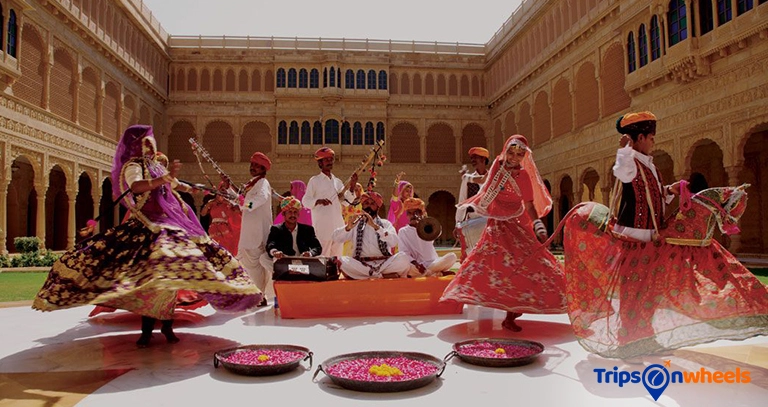
The Vibrant and Traditional Rajasthani clothing
Rajasthani clothing is distinguished by its vibrant colors and intricate craftsmanship, reflecting the local ethos and environmental needs. Designed for the harsh desert climate, traditional attire includes Ghagras for women and Dhotis or Pajamas for men, often paired with protective turbans. The fabrics, adorned with elaborate embroidery and mirror work, showcase the region’s rich textile heritage. These garments are functional, culturally significant, and integral to the visual spectacle of Rajasthan’s festive celebrations.
Rajasthani Women’s Traditional Attire
The traditional dress for women in Rajasthan includes the Ghagra (long skirt), Choli (blouse), and Odhni (veil), which are often adorned with mirror work and embroidery. These garments are typically crafted from vibrant fabrics that reflect the cultural richness of the region. The intricate designs and detailed handiwork on these outfits not only enhance their beauty but also hold cultural significance, representing the artisanal skills passed down through generations.
Rajasthani Men’s Traditional Dress
Men in Rajasthan wear dhotis, kurta, and a turban, known locally as ‘pagari’, which symbolizes honor and respect. The turban, in particular, is an integral part of the traditional attire and varies in style and color across different regions, reflecting the wearer’s social status, community, and personal style. This ensemble not only adheres to cultural norms but also suits the hot, dry climate of the region, providing comfort and protection from the harsh sun.
Rajasthan’s Folk Dances and Music
Rajasthan is famous for its folk dances and music, including the spirited Ghoomar dance and the enchanting tunes of Sarangi. These cultural expressions are deeply rooted in the state’s traditions and are a significant part of any celebration or festival. The Ghoomar dance, characterized by its graceful twirls and vibrant attire, is performed by women and is a sight to behold at social gatherings. The Sarangi, a stringed instrument, accompanies many folk songs and dances, its soulful sound echoing the rich history and emotional depth of Rajasthani culture.
Traditional Crafts of Rajasthan
Crafts like blue pottery, block printing, and jewelry making are significant aspects of Rajasthan’s economy and cultural identity. These traditional arts are not only a source of livelihood for many artisans but also play a crucial role in preserving the heritage of the region. Blue pottery, known for its unique turquoise color, is especially popular in Jaipur, while block printing has been practiced in towns like Bagru and Sanganer for centuries. Rajasthani jewelry, famous for its intricate designs and use of precious stones, continues to be highly prized both in India and abroad.
Cuisine
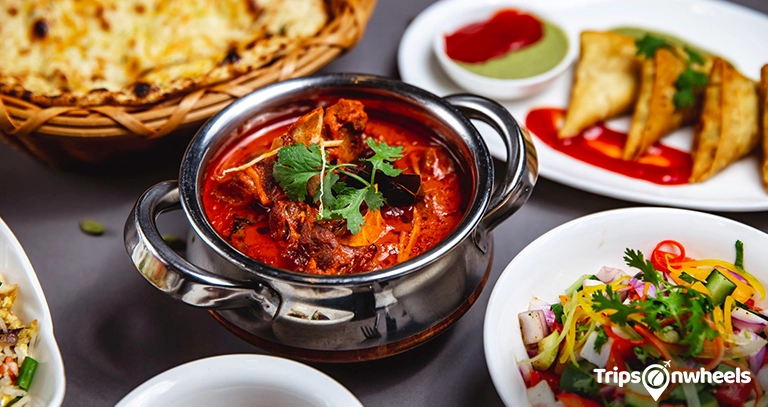
Staple Foods of Rajasthan
The staple food of Rajasthan includes millet, maize, and pulses, which are well-suited to the arid conditions of the region. These ingredients form the basis of many traditional dishes that are not only nutritious but also adapted to withstand the harsh climate. Millet, particularly, is used extensively because of its drought-resistant qualities, making it an ideal crop for Rajasthan’s dry lands. Pulses provide essential proteins, complementing the predominantly vegetarian diet influenced by the region’s cultural and religious practices.
Dish of Rajasthan: Dal Baati Churma
Dal Baati Churma is considered the national dish of Rajasthan, offering a delightful combination of spicy dal, baked baati, and sweet churma. This iconic meal perfectly encapsulates the culinary essence of the region, blending bold flavors and varied textures. The dish is a staple at celebrations and a beloved everyday meal, symbolizing Rajasthani hospitality and the ability to create rich, satisfying food from simple, locally sourced ingredients.
Laal Maas: Rajasthan’s Fiery Mutton Curry
Laal Maas, a fiery mutton curry, is famed for its heat and depth of flavor, typically enjoyed with bajra rotis. Originating from the royal kitchens of Rajasthan, this dish is renowned for its rich, spicy gravy made with a generous amount of red chilies and traditional spices. The robust flavors of Laal Maas embody the spirit of Rajasthani cuisine, which is known for its bold and hearty dishes. This curry is a favorite during festive occasions and is a true reflection of the state’s love for intense and piquant flavors.
Ghevar: Rajasthan’s Festive Sweet
Ghevar, a disc-shaped sweet, is specially made during the Teej Festival and is beloved across the state. This delectable dessert is made from flour, sugar, and ghee, and is traditionally associated with the monsoon season and Teej festivities. Its intricate lattice-like appearance and rich, sweet flavor make it a favorite among locals and tourists alike, symbolizing the joy and celebration of this auspicious festival.
Ker Sangri: Rajasthan’s Culinary Ingenuity
Ker Sangri, a traditional Rajasthani dish, is made from wild berries and beans, showcasing the culinary ingenuity in utilizing local ingredients. This unique dish highlights Rajasthan’s ability to transform humble, locally sourced ingredients into flavorful and nutritious meals, reflecting the region’s rich culinary heritage and resourcefulness.
Lifestyle and Festivals
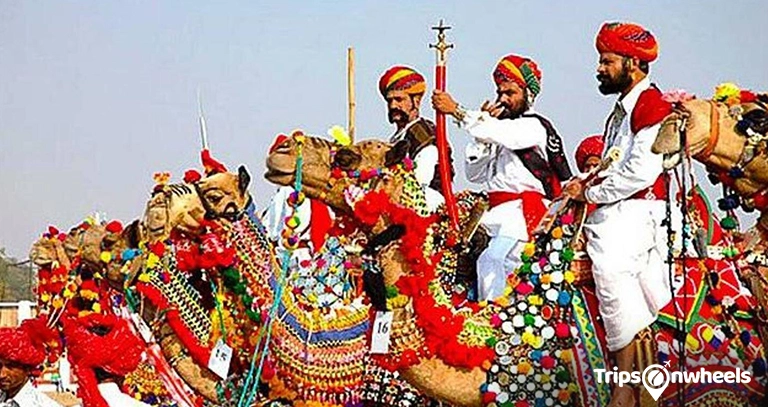
Rajasthan’s Cultural Spectacle: Camel Races and Cattle Fairs
Camel races and cattle fairs are significant cultural events in Rajasthan, with the Pushkar Camel Fair being one of the largest in the world. These events not only showcase the region’s rich cultural heritage but also provide a platform for farmers and traders to buy, sell, and showcase their livestock. The Pushkar Camel Fair, in particular, is a vibrant spectacle that attracts tourists and traders from around the globe, offering a glimpse into Rajasthan’s traditional rural life and customs.
Festivals of Joy: Diwali, Holi, and Teej in Rajasthan
Diwali, Holi, and Teej are celebrated with great pomp and show in Rajasthan, reflecting the vibrant cultural fabric of the state. These festivals are not just religious occasions but also a time for communities to come together, exchange greetings, and participate in various cultural activities. Diwali, the festival of lights, is celebrated with the lighting of lamps and fireworks, symbolizing the victory of light over darkness. Holi, the festival of colors, is marked by vibrant celebrations where people smear each other with colored powders and water, spreading joy and camaraderie. Teej, a festival dedicated to the Goddess Parvati, is celebrated with fasting, folk music, and dance, especially by women, to pray for the well-being of their spouses.
Vibrant Homes: Reflecting Rajasthan’s Festive Spirit
Rajasthani homes are often painted in bright colors and adorned with intricate patterns, reflecting the festive spirit of its people. These vibrant decorations extend beyond homes to public spaces, creating a visually stunning environment that is characteristic of Rajasthan’s lively culture.
Kathputli: Rajasthan’s Traditional Puppetry
Puppetry, or Kathputli, is a traditional form of entertainment in Rajasthan, with performances telling stories of heroism and romance. These puppet shows, accompanied by folk music and narrations, captivate audiences and provide a glimpse into the region’s rich cultural heritage.
Rajasthan’s Hospitality: “Padharo mhare des”
The people of Rajasthan are known for their hospitality and warmth, often encapsulated in the phrase, “Padharo mhare des” (Welcome to my land). This traditional greeting reflects the welcoming nature of the Rajasthani people, who take pride in their culture and heritage.
Natural and Spiritual Sites
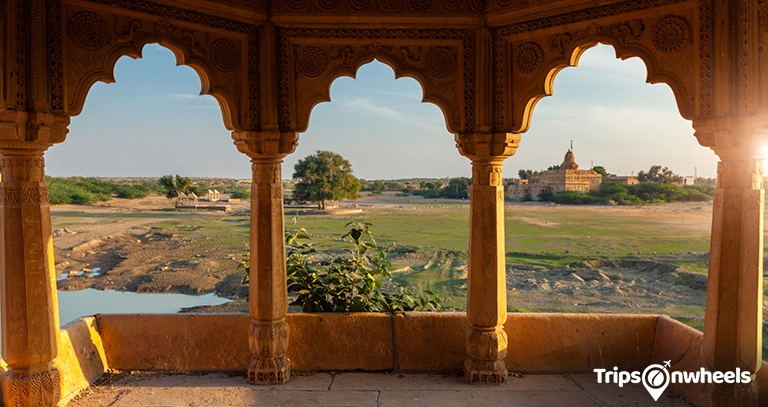
Ranthambore National Park: A Haven for Tigers
Ranthambore National Park is one of the largest national parks in northern India, famous for its tiger population. The park’s diverse terrain, from dense forests to open grasslands, provides a natural habitat for a variety of wildlife, making it a popular destination for wildlife enthusiasts and photographers alike.
Mount Abu: Rajasthan’s Tranquil Hill Station
Mount Abu is the only hill station in Rajasthan, providing a scenic retreat from the desert heat. The cool climate, lush greenery, and stunning landscapes make it a popular destination for tourists seeking respite from the arid plains.
Dilwara Temples: Marvels of Marble Architecture
The Dilwara Temples near Mount Abu are renowned for their stunning marble architecture and intricate carvings. These temples, built between the 11th and 13th centuries, are a masterpiece of craftsmanship and are considered among the most beautiful Jain temples in the world.
Ajmer Sharif Dargah: A Sanctuary of Spiritual Harmony
The Ajmer Sharif Dargah is a revered spiritual site, attracting pilgrims from all religions. It is the tomb of the Sufi saint Khwaja Moinuddin Chishti, who is believed to fulfill the wishes of his devotees.
Jaisalmer: The Golden City of Rajasthan
Jaisalmer, the Golden City, rises from the desert as a beacon of golden sandstone, dominated by the ancient Jaisalmer Fort. This UNESCO World Heritage Site is a living fort with a vibrant market, intricately carved havelis, and narrow lanes that capture the essence of Rajasthan’s rich history and culture.
Exploration of Rajasthan’s Richness
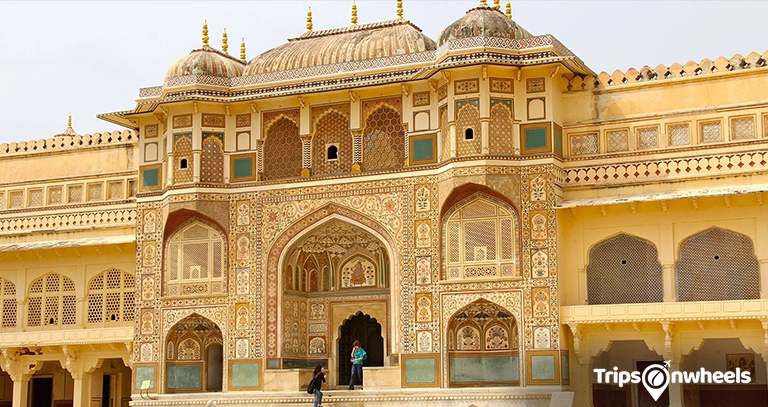
Bikaner: A Gastronomic Delight
Bikaner is famous for its snacks and sweets, particularly Bikaneri Bhujia which has earned Geographical Indication status. This savory snack, made from gram flour and spices, is a popular delicacy enjoyed not only in Bikaner but across India.
Mehrangarh Fort: Gateway to the Blue City
Jodhpur’s Mehrangarh Fort, one of the most formidable and massive forts in India, offers a breathtaking view of the blue houses of the city. The fort’s imposing structure and intricate architecture showcase the grandeur of Rajasthan’s royal history.
Jaisalmer Desert Festival: A Celebration of Rajasthan’s Rich Culture
The annual Desert Festival in Jaisalmer showcases Rajasthan’s cultural richness through folk dances, camel races, and other traditional activities. This vibrant festival attracts tourists from around the world to witness the colorful celebrations against the backdrop of the golden sands of the Thar Desert.
Rajasthan’s Solar Revolution: Harnessing the Power of the Sun
Rajasthan produces a significant amount of solar energy, thanks to the ample sunlight it receives, with the Bhadla Solar Park being one of the largest. This renewable energy source not only helps meet the state’s power requirements but also contributes to reducing carbon emissions.
Shekhawati’s Painted Havelis: Preserving History Through Art
The painted havelis of Shekhawati are known as ‘open art galleries’, famous for their detailed frescoes that decorate the walls and ceilings. These intricate artworks depict scenes from mythology, history, and daily life, reflecting the artistic and cultural heritage of the region.
Cultural Artifacts and Traditions
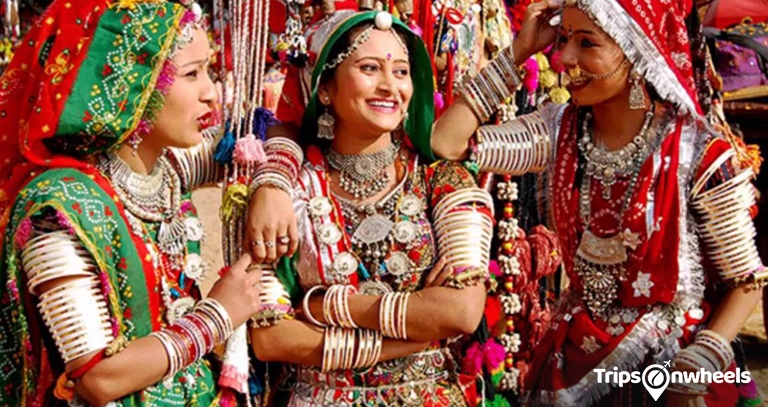
Turbans of Rajasthan: A Colorful Cultural Identity
Rajasthani turbans vary in style and color across regions, each style representing a particular community or region. The turban, or ‘pagari’, holds cultural significance and is a symbol of pride and honor for the wearer.
Kathputli Puppetry: Rajasthan’s Timeless Folk Art
Kathputli puppetry, a traditional Rajasthani art form, has been practiced for centuries to narrate folk tales and local legends. These puppets, made from wood, cloth, and metal, come to life through skilled puppeteers who manipulate them to tell stories that are often accompanied by music and dance.
Rajasthan’s Rich Wildlife: A Sanctuary for Migratory Birds
The wildlife of Rajasthan is quite diverse, with the Bharatpur Bird Sanctuary offering a home to thousands of migratory birds annually. This sanctuary, also known as Keoladeo National Park, is a UNESCO World Heritage Site and a haven for birdwatchers and nature enthusiasts.
Rajasthan’s Jewelry: The Radiance of Kundan and Meenakari
Rajasthan’s traditional jewelry is renowned worldwide, with Kundan and Meenakari being the most sought-after styles. Kundan jewelry features refined gold settings encrusted with precious stones, while Meenakari involves the intricate art of enameling, creating vibrant and detailed designs on metal surfaces.
Rajasthan’s Vibrant Textile Prints
The state is also famous for its textiles, particularly Sanganeri and Bagru block prints, which are popular for their vibrant patterns and natural dyes. These traditional prints are not only visually appealing but also environmentally friendly, reflecting Rajasthan’s commitment to sustainable practices.
Festivals and Gastronomy
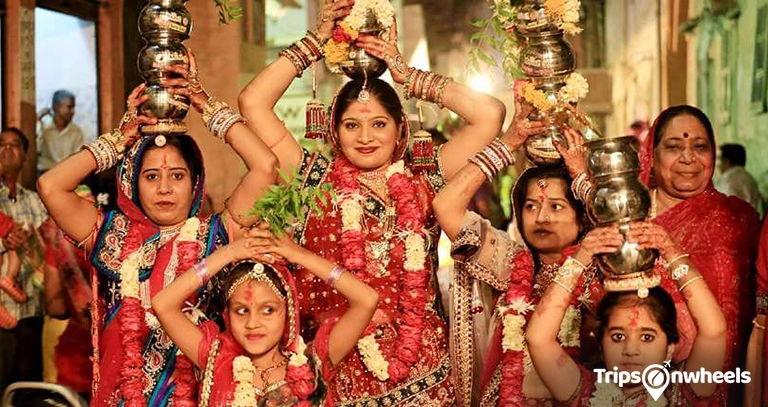
Gangaur Festival: Celebrating Marital Bliss
Gangaur is one of the most important festivals in Rajasthan, celebrated by women for marital bliss. It is a colorful festival where women dress in their finest attire and pray for the well-being and longevity of their husbands.
Rajasthan’s Delightful Kachori Varieties
Mawa Kachori from Jodhpur and Pyaaz Kachori from Jaipur are popular snacks enjoyed by locals and tourists alike. These deep-fried pastries are filled with a sweet mixture of mawa (milk solids) and dry fruits in the case of Mawa Kachori, and a savory mixture of onions and spices in the case of Pyaaz Kachori. They are often served with chutneys or spicy gravies, making them a delightful treat for the taste buds.
Sunset Romance at Pichola Lake
Pichola Lake in Udaipur offers stunning sunset views, making it a perfect spot for romantic evenings. The lake is surrounded by picturesque hills, palaces, and temples, adding to its charm and allure.
Rajasthan International Folk Festival
The Rajasthan International Folk Festival (RIFF) in Jodhpur is a five-day event celebrating traditional music and arts. Held at the majestic Mehrangarh Fort, RIFF showcases the rich cultural heritage of Rajasthan through performances by renowned artists and musicians, along with workshops and exhibitions.
Rajasthan’s Cool Treats: Kulfi and Faluda
Kulfi and faluda are popular desserts, especially during the hot summer months. Kulfi is a creamy and rich frozen dessert, similar to ice cream but denser and creamier. Faluda is a refreshing drink made with milk, vermicelli, basil seeds, and flavored syrup, often topped with ice cream or kulfi. These desserts provide a cooling and indulgent treat during Rajasthan’s scorching summers.
Lifestyle and Economy
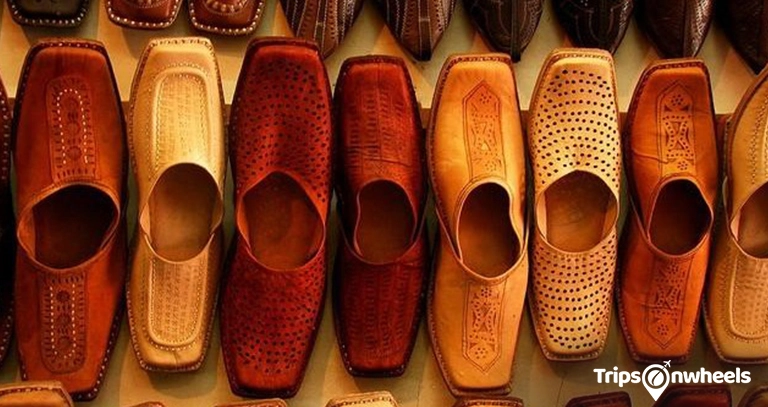
Rajasthan’s Camel Leather Craft: Stylish and Durable
Rajasthan is known for its camel leather craft, particularly in making footwear and bags. The state’s skilled artisans use traditional techniques to create durable and stylish products that are popular among locals and tourists alike.
Makrana Marble: Rajasthan’s Prized Stone
Marble from Rajasthan is highly prized, with the Makrana variety being used in the construction of the Taj Mahal. This fine-grained marble is known for its luster and durability, making it a popular choice for architectural masterpieces and sculptures.
Rajasthan’s Tales of Heroism and Romance
The state has a robust tradition of storytelling, with tales of heroism and romance passed down through generations. These stories are often narrated through folk songs, dances, and puppetry, preserving the rich cultural heritage of Rajasthan.
Rajasthan’s Agriculture: Nurturing the Land
Agriculture remains a vital part of Rajasthan’s economy, with mustard and millet among the primary crops. The arid climate of the region necessitates innovative farming techniques, including rainwater harvesting and crop rotation, to sustain agriculture.
Rajasthan’s Vibrant Furniture
Rajasthani furniture, known for its intricate carvings and use of vibrant colors, is popular across the country and internationally. Crafted from high-quality wood, these pieces often feature traditional designs and motifs, adding a touch of elegance to any space.
Unique Traits and Global Connections
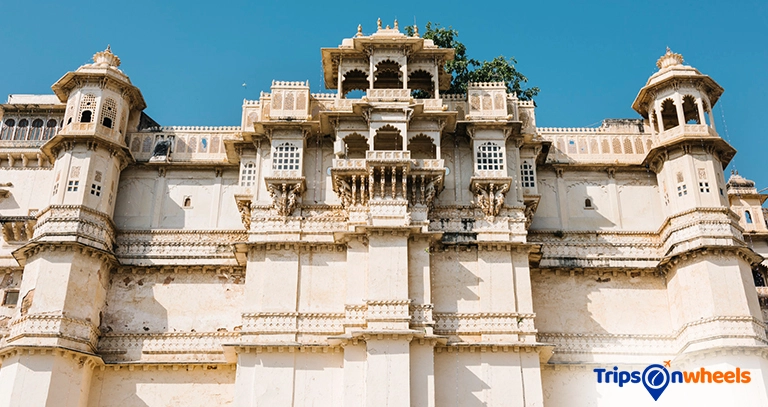
Rajasthan’s Architectural Marvels: Stepwells
Rajasthan’s stepwells, historically used to conserve and manage water, are architectural marvels that attract historians and architects. These elaborate structures, known as baoris or bawdis, feature intricate carvings, galleries, and staircases that lead down to the water level. Stepwells not only served as a water source but also as community gathering spaces and shelters from the heat.
Rajasthan’s Global Musical Influence
The state’s folk music has influenced global music genres, with collaborations featuring Rajasthani musicians gaining international acclaim. This music, characterized by its rhythmic beats, soulful melodies, and unique instruments like the dholak and sarangi, has found its way into contemporary music, adding a touch of Rajasthan’s rich cultural heritage to the world’s music scene.
Rajasthan’s Wildlife Sanctuaries: Preserving Biodiversity
Rajasthan has a significant number of wildlife sanctuaries and national parks, including Sariska Tiger Reserve and Keoladeo National Park. These protected areas provide a habitat for a diverse range of wildlife, including tigers, birds, and other endangered species, contributing to the conservation efforts in the region.
Pushkar Fair: A Celebration of Camels and Culture
The Pushkar Fair is not only about camels but also features a competition for the most beautifully decorated camel. This colorful event showcases the cultural significance of camels in Rajasthan and attracts tourists from around the world.
Rajasthan’s Timeless Charm: Global Recognition for its Traditions
Rajasthan’s traditional attires and foods are increasingly featured in global fashion and culinary shows, reflecting their universal appeal and timeless charm. This growing recognition highlights the richness and diversity of Rajasthan’s culture, captivating audiences worldwide.
These 50 facts about Rajasthan highlight its multifaceted nature, from deep-rooted traditions to adaptations that meet modern day challenges, illustrating why Rajasthan remains a captivating destination for culture, history, and adventure enthusiasts around the world.
For More Travel Blog:- Travellfy

